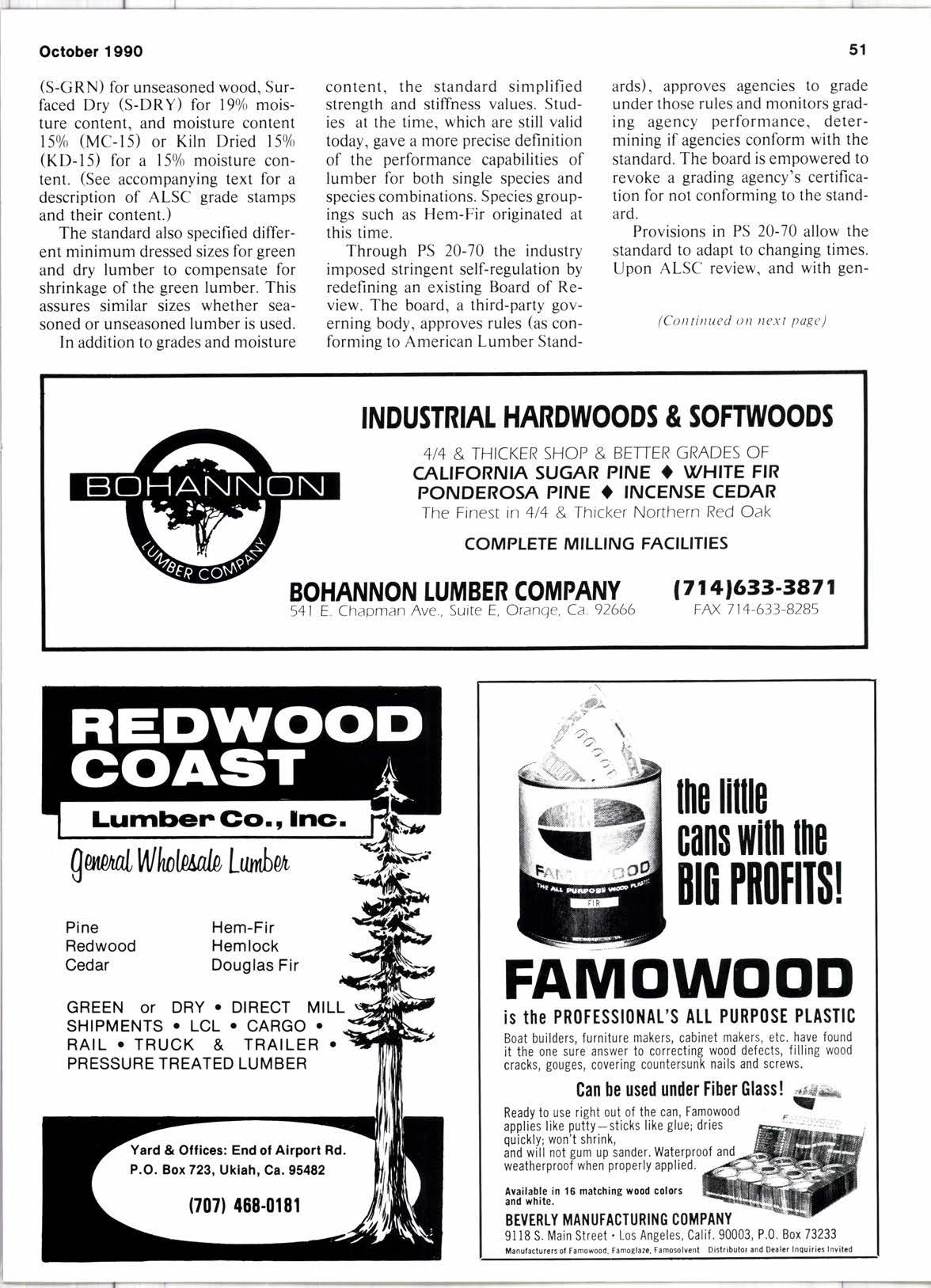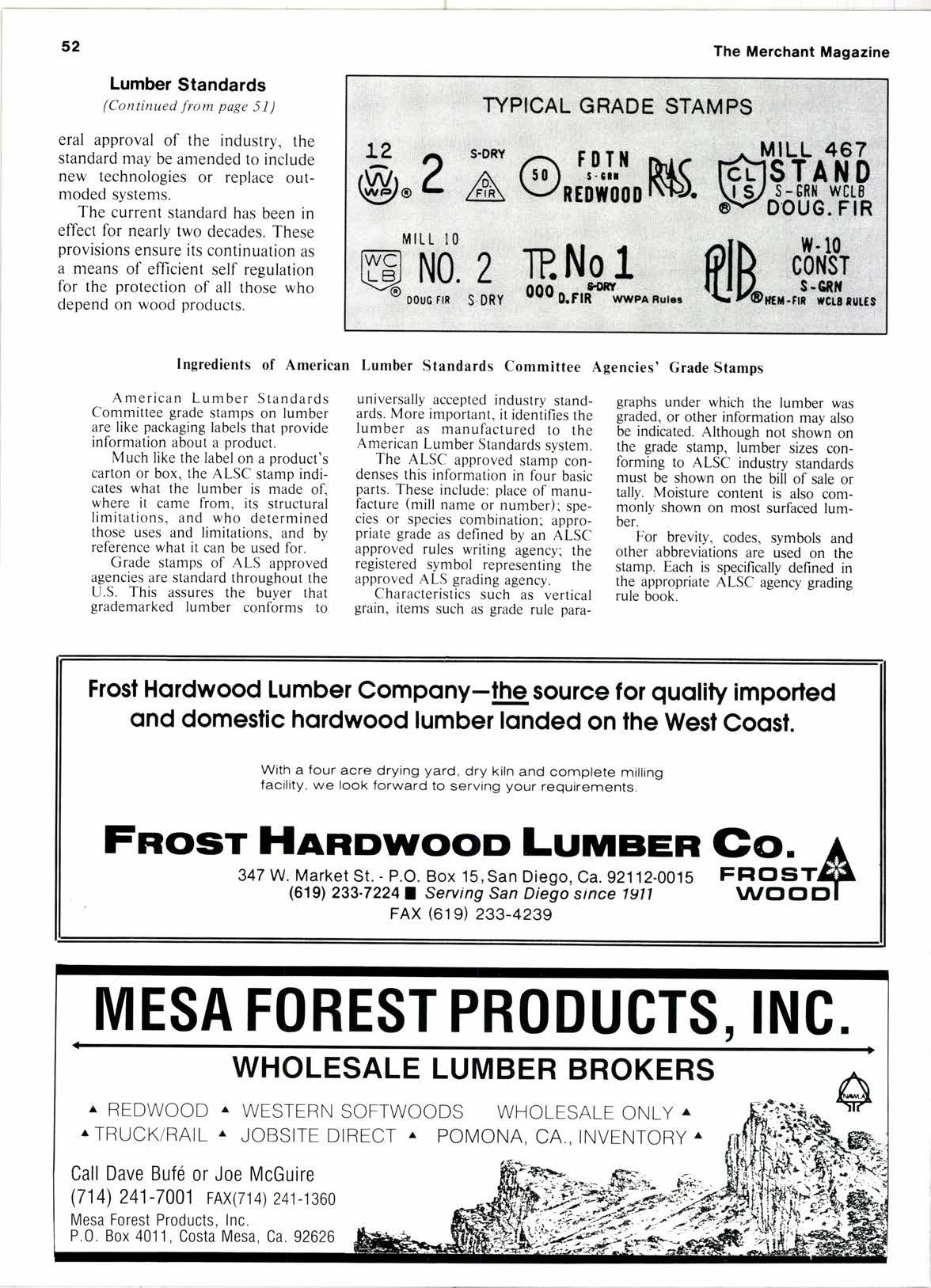
2 minute read
/[JBT1UMBERSALES
FAX: 503-684-7906
1 -800-LJB-LMBR (552-5627) ln 0regon 503-620-5847
8858 S.W. Center Ct., Tigard, 0R97223
P.0. Box 23955, Tigard, 0regon 97223
Specializing in Western Soltwood Boards &
Clears
For all of your finish lumber, from one-half of a truckload to a trainload, just dial...
1.8OO.LJB.LMBR FAX (s03) 684-7e06
Broker: Louie Buschbacher, Jacques Voelzke, Jr., Ty Bacon
Office Manager: Carla Renick
(S-GRN) for unseasoned wood, Surfaced Dry (S-DRY) for l9olo moisture content, and moisture content 15% (MC-15) or Kiln Dried 15% (KD-15) for a 15% moisture content. (See accompanying text for a description of ALSC grade stamps and their content.)
The standard also soecified different minimum dressed sizes for green and dry lumber to compensate for shrinkage of the green lumber. This assures similar sizes whether seasoned or unseasoned lumber is used.
In addition to grades and moisture content, the standard simplified strength and stiffness values. Studies at the time, which are still valid today, gave a more precise definition of the performance capabilities of lumber for both single species and species combinations. Species groupings such as Hem-Fir originated at this time.
Through PS 20-70 the industry imposed stringent self-regulation by redefining an existing Board of Review. The board, a third-party governing body, approves rules (as conforming to American Lumber Stand-
Industrnt
ards), approves agencies to grade under those rules and monitors grading agency performance, determining if agencies conform with the standard. The board is empowered to revoke a grading agency's certification for not conforming to the standard.
Provisions in PS 20-70 allow the standard to adapt to changing times. Upon ALSC review, and with gen(Corttittucd on nexl ltage)
414 & THICKER SHOP & BETTER GRADES OF CALIFORNIA SUGAR PINE t WHITE FIR
The in 4/4 & Thicker Northern Red Oak
PINE ' INCENSE CEDAR
17
| FAX
Lumber Standards

(Continued from page 51) eral approval of the industry, the standard may be amended to include new technologies or replace outmoded systems.
The current standard has been in effect for nearly two decades. These provisions ensure its continuation as a means of efficient self regulation for the protection of all those who depend on wood products.
American Lumber Standards Committee grade stamps on lumber are like packaging labels that provide information about a product.
Much like the label on a product's carton or box, the ALSC stamp indicates what the lumber is made of, where it came from. its structural limitations, and who determined those uses and limitations. and bv reference what it can be used for.
Grade stamps of ALS approved agencies are standard throughout the U.S. This assures the buyer that grademarked lumber conforms to universally accepted industry standards. More important, it identifies the lumber as manufactured to the American Lumber Standards system.
The ALSC approved stamp condenses this information in four basic parts. These include: place of manufacture (mill name or-number); species or species combination; appro- priate grade as defined by an ALSC approved rules writing agency; the registered symbol representing the approved ALS grading agency.
Characteristics such as vertical grain, items such as grade rule para- graphs under which the lumber was graded, or other information may also be indicated. Although not shown on the grade stamp, lumber sizes conforming to ALSC industry standards must be shown on the bill of sale or tally. Moisture content is also commonly shown on most surfaced lumber.
For brevity, codes, symbols and other abbreviations are used on the stamp. Each is specifically defined in the appropriate ALSC agency grading rule book.










